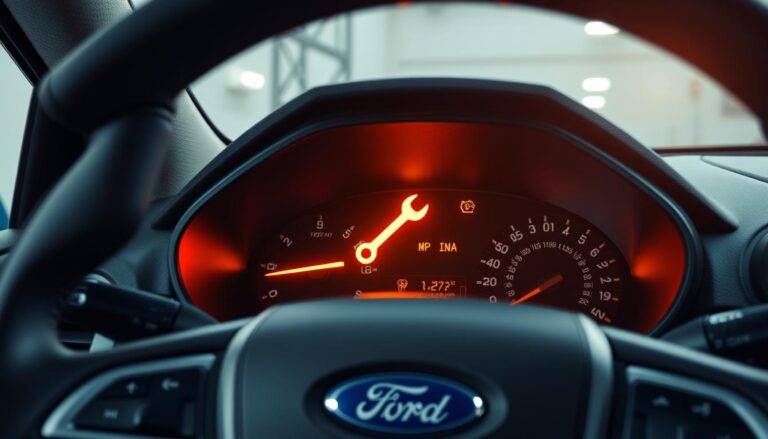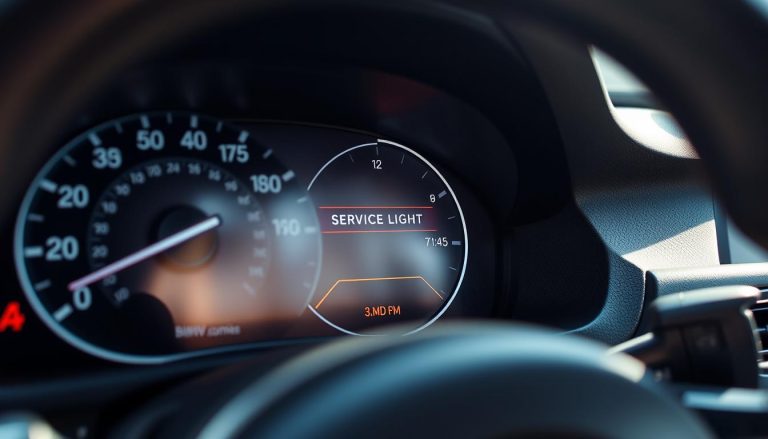The Vauxhall Corsa is a popular vehicle, but like any car, it has its share of dashboard warning lights that can be confusing. These lights are crucial for maintaining the vehicle’s health and ensuring safety on the road.
When a warning light illuminates on your dashboard, it signals that something needs attention. Ignoring these warnings can lead to more severe problems, potentially causing damage to your vehicle or compromising your safety.
Recognizing what these lights mean is the first step in addressing the issue. This guide will help you decipher the meaning behind common Corsa dashboard warning lights and provide steps on how to fix them.
Key Takeaways
- Dashboard warning lights are crucial for vehicle maintenance and safety.
- Ignoring warning lights can lead to more severe problems.
- Understanding the meaning of warning lights is key to addressing issues.
- This guide will help you identify and fix common Corsa dashboard warning lights.
- Prompt action can prevent damage and ensure safety.
Understanding Corsa Dashboard Warning Lights
The dashboard warning lights on your Corsa dashboard serve as vital signs, indicating potential issues that require attention. These lights are designed to inform you about various conditions that may affect your vehicle’s operation, ranging from minor issues to serious problems that require immediate action.
The Purpose of Dashboard Warning Lights
Dashboard warning lights are an essential part of your vehicle’s safety and monitoring system. They alert you to potential problems, allowing you to take corrective action before they become major issues. This proactive approach helps in maintaining your vehicle’s health, ensuring safety, and potentially reducing repair costs.
Categories of Warning Lights
Warning lights can be categorized based on their functions and the systems they monitor. Common categories include:
- Engine and transmission warnings
- Safety system alerts (e.g., ABS, airbags)
- Tire pressure monitoring system (TPMS) warnings
- Brake system warnings
Severity Levels: Red, Amber, and Green
Dashboard warning lights are typically color-coded to indicate the severity of the issue:
- Red lights signify serious issues that require immediate attention, such as engine overheating or oil pressure loss.
- Amber or yellow lights indicate less critical issues that should be addressed soon, such as a faulty sensor or a loose gas cap.
- Green lights are usually informational, indicating that a system is active, such as cruise control or turn signals.
Understanding these severity levels is crucial for responding appropriately to the warning lights and ensuring your vehicle’s safety and performance.
Car with Spanner Light Corsa: Understanding Your Dashboard Warning Signals
The spanner light on your Vauxhall Corsa is more than just a nuisance; it’s a vital warning signal. This light is part of your vehicle’s onboard diagnostics system, designed to alert you to potential issues that require attention.
What the Spanner Light Indicates
The spanner light, also known as the engine management light or service light, indicates that your vehicle needs servicing or that there’s a fault with the engine management system. It’s not specific to one issue but rather a general warning that something is amiss.
Key aspects to consider:
- The light can be triggered by a variety of factors, ranging from a loose gas cap to more serious engine issues.
- It’s essential to check your vehicle’s manual for specific guidance related to the spanner light.
Common Causes of the Spanner Light
Several factors can cause the spanner light to illuminate on your Corsa dashboard. Understanding these can help you diagnose the issue more effectively.
| Cause | Description |
|---|---|
| Loose or Faulty Gas Cap | A loose or damaged gas cap can trigger the spanner light due to the resulting leak in the fuel system. |
| Faulty Oxygen Sensor | A malfunctioning oxygen sensor can cause the light to come on, as it affects engine performance. |
| Catalytic Converter Issues | Problems with the catalytic converter can also trigger the spanner light, indicating a need for repair or replacement. |
“Regular maintenance is key to preventing many issues that could trigger the spanner light. Ensuring your vehicle is serviced according to the manufacturer’s schedule can help avoid unexpected problems.” –
When to Take Immediate Action
If the spanner light appears while you’re driving, it’s generally not an emergency, but it does require attention. However, if it’s accompanied by other warning lights or symptoms like loss of power or unusual noises, you should pull over safely and seek assistance.
Immediate action is necessary if:
- The light is red or flashing, indicating a more serious issue.
- You notice a significant decrease in vehicle performance.
- Other warning lights are illuminated on your dashboard.
Common Corsa Warning Lights and Their Meanings
Understanding the warning lights on your Corsa dashboard is crucial for maintaining your vehicle’s health. These lights are designed to alert you to potential issues, ranging from minor problems to serious faults that require immediate attention.

Engine Management Light
The engine management light, often represented by an engine symbol, indicates a problem with the engine or its management system. This could be due to a faulty sensor, a misfire, or other issues affecting engine performance. For more information on dashboard warning lights, you can visit RAC’s guide on car dashboard warning.
Some common causes include:
- Loose or faulty gas cap
- Faulty oxygen sensor
- Catalytic converter issues
Battery Warning Light
The battery warning light typically looks like a battery and indicates a problem with the vehicle’s charging system. This could mean the battery is not being charged properly, or there’s an issue with the alternator.
Possible causes include:
- Faulty alternator
- Dead or weak battery
- Loose or corroded battery connections
Oil Pressure Warning
The oil pressure warning light is usually represented by an oil can or ‘oil pressure low’ message. It signifies that the engine oil pressure is too low, which can lead to serious engine damage if not addressed promptly.
Causes may include:
- Low oil level
- Faulty oil pressure sensor
- Internal engine wear or damage
Brake System Warnings
Brake system warnings can appear as ‘Brake’ or ‘ABS’ lights and indicate issues with the braking system. These could be problems with the brake pads, brake fluid level, or the ABS system itself.
Possible issues include:
- Worn brake pads
- Low brake fluid level
- Faulty ABS sensor or module
ABS and Traction Control Warnings
The ABS (Anti-lock Braking System) and traction control warning lights are designed to alert you to problems with these systems. Issues here can affect the vehicle’s stability and braking performance.
Causes may include:
- Faulty ABS or traction control sensor
- System malfunction
- Low brake fluid level affecting ABS operation
How to Diagnose and Fix Corsa Warning Light Issues
When Corsa warning lights appear on your dashboard, understanding how to diagnose and fix the underlying issues is crucial. The process involves using the right diagnostic tools and following a systematic troubleshooting approach.
Using OBD-II Scanners for Diagnostics
One of the primary tools for diagnosing Corsa warning light issues is an OBD-II scanner. This device connects to your vehicle’s onboard diagnostics system, allowing you to read trouble codes that correspond to specific problems. OBD-II scanners can help identify issues ranging from engine misfires to transmission problems. By using an OBD-II scanner, you can gain a clearer understanding of what is causing the warning light to illuminate.

Step-by-Step Troubleshooting Process
After identifying the trouble code with an OBD-II scanner, the next step is to follow a systematic troubleshooting process. This involves several key actions:
- Checking fluid levels and connections to ensure they are at the recommended levels and free from leaks or damage.
- Inspecting fuses and electrical components for signs of wear or damage.
Checking Fluid Levels and Connections
Low fluid levels or leaks can trigger various warning lights. Checking the engine oil, coolant, brake fluid, and other essential fluids is a critical step. Ensure that all connections are secure and that there are no signs of leakage.
Inspecting Fuses and Electrical Components
Faulty fuses or electrical components can also cause warning lights to appear. Inspecting these components for damage or wear and replacing them as needed can resolve many issues.
Resetting Warning Lights After Repairs
Once the underlying issue has been addressed, the warning light needs to be reset. This can typically be done using an OBD-II scanner, which can clear the trouble code from your vehicle’s onboard computer. It’s essential to ensure that the repair is successful before resetting the light to avoid recurrence.
When to Seek Professional Help
While many Corsa warning light issues can be diagnosed and fixed independently, some problems require professional assistance. If you’re unsure about the diagnosis or feel uncomfortable performing the repairs, it’s advisable to seek help from a qualified mechanic. They have the expertise and specialized tools to handle complex issues.
By following these steps and using the right diagnostic tools, you can effectively diagnose and fix Corsa warning light issues, ensuring your vehicle remains in good working condition.
Conclusion
Recognizing the significance of Corsa dashboard warning lights is crucial for maintaining your vehicle’s health and ensuring your safety on the road. The various warning lights on your dashboard serve as indicators of potential issues, ranging from minor problems to serious mechanical faults.
A summary of Corsa dashboard warning lights reveals that they are categorized into different severity levels, including red, amber, and green, each signifying the level of urgency required for addressing the indicated issue. Understanding these warning signals enables you to take prompt action, thereby preventing minor issues from escalating into major repairs.
The importance of understanding warning signals cannot be overstated, as it allows drivers to respond appropriately to potential problems, reducing the risk of accidents and costly repairs. By familiarizing yourself with the meanings behind these warning lights, you can drive with confidence, knowing you’re taking proactive steps to maintain your vehicle’s performance and longevity.
FAQ
What does the spanner light on my Corsa dashboard mean?
The spanner light on your Vauxhall Corsa indicates a problem with the engine or transmission, and it’s a signal to check the vehicle’s systems. It’s often related to the engine management system or a fault with the transmission.
How do I diagnose the issue when a warning light comes on in my Corsa?
To diagnose the issue, you can use an OBD-II scanner to read the fault code stored in the vehicle’s onboard computer. This will give you a starting point for troubleshooting the problem.
What is the difference between red, amber, and green warning lights on my Corsa dashboard?
Red warning lights indicate a serious issue that requires immediate attention, amber lights signal a caution or warning, and green lights indicate a system is operating. Understanding the color coding can help you respond appropriately to a warning light.
Can I reset the warning lights on my Corsa myself?
Yes, you can reset some warning lights on your Vauxhall Corsa using an OBD-II scanner or by disconnecting the battery. However, if the underlying issue isn’t resolved, the light will likely come back on.
What should I do if the engine management light comes on in my Corsa?
If the engine management light comes on, it’s recommended to have your vehicle checked by a mechanic or a Vauxhall dealership as soon as possible to diagnose the issue and prevent any potential damage.
Why is my Corsa’s battery warning light on?
The battery warning light typically indicates a problem with the charging system, such as a faulty alternator or a dead battery. You should have your vehicle’s electrical system checked to diagnose the issue.
How do I check the oil pressure in my Corsa?
To check the oil pressure, refer to your owner’s manual for the correct procedure. Typically, you’ll need to check the oil level and condition, and if the light persists, it may indicate a more serious issue with the engine’s oil system.
What does the ABS warning light on my Corsa indicate?
The ABS warning light indicates a problem with the Anti-lock Braking System. It’s recommended to have the system checked by a professional to diagnose and repair any issues.
Can I drive my Corsa with a warning light on?
It depends on the warning light. If it’s red, it’s generally not recommended to drive your vehicle. If it’s amber, you may be able to drive carefully to a repair shop, but it’s still important to have the issue diagnosed and addressed as soon as possible.


